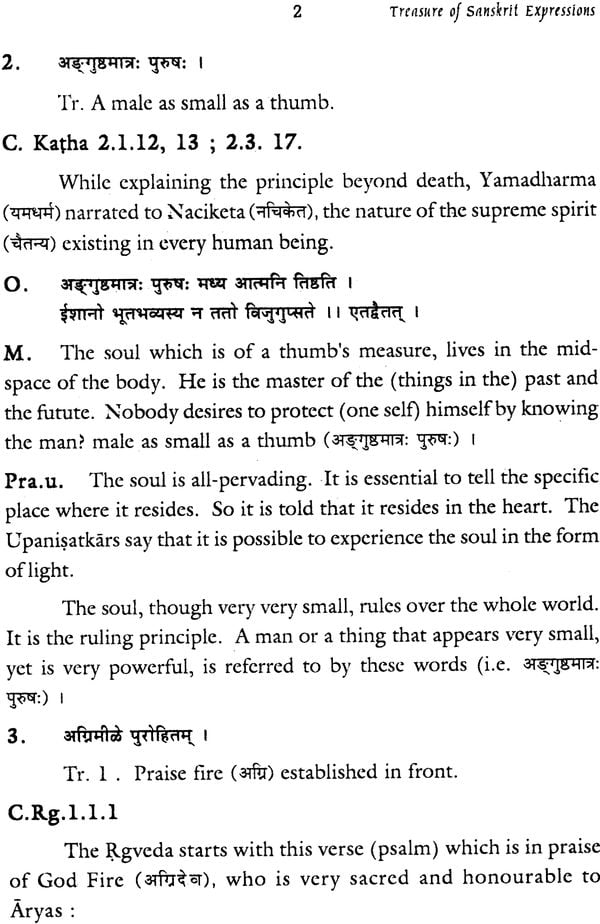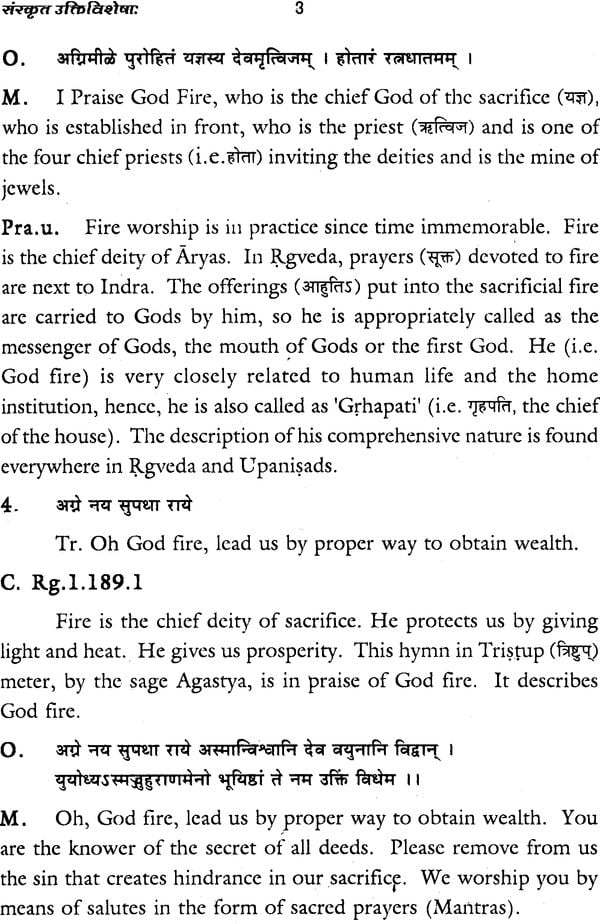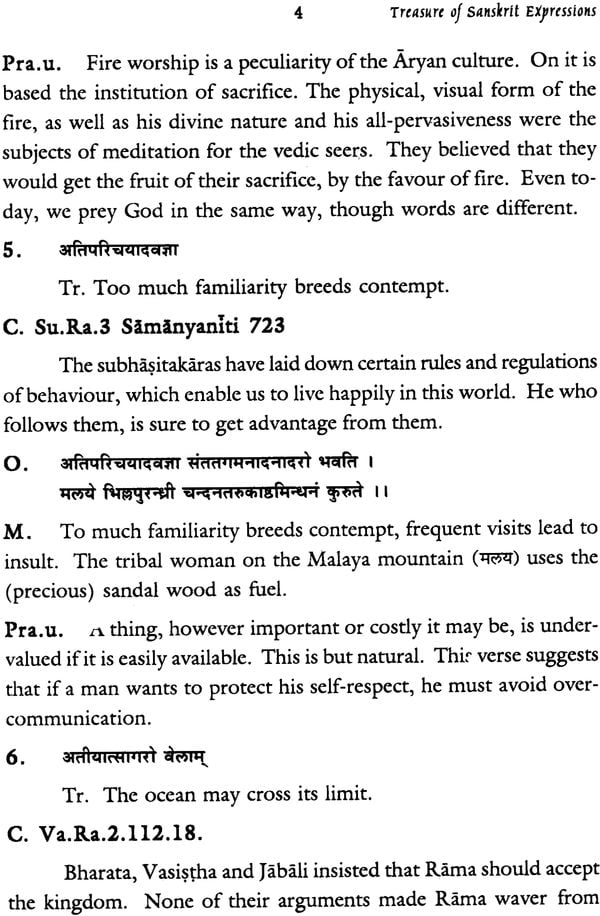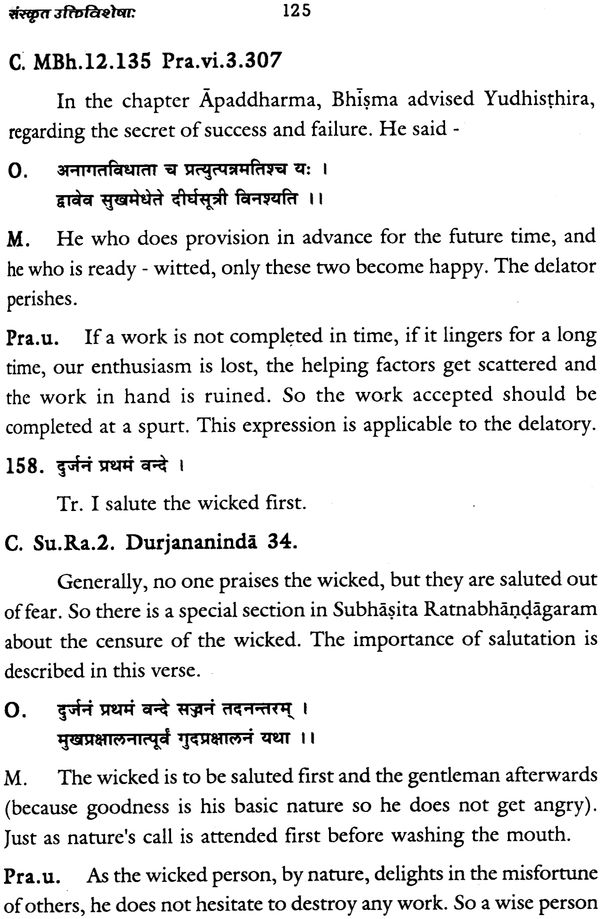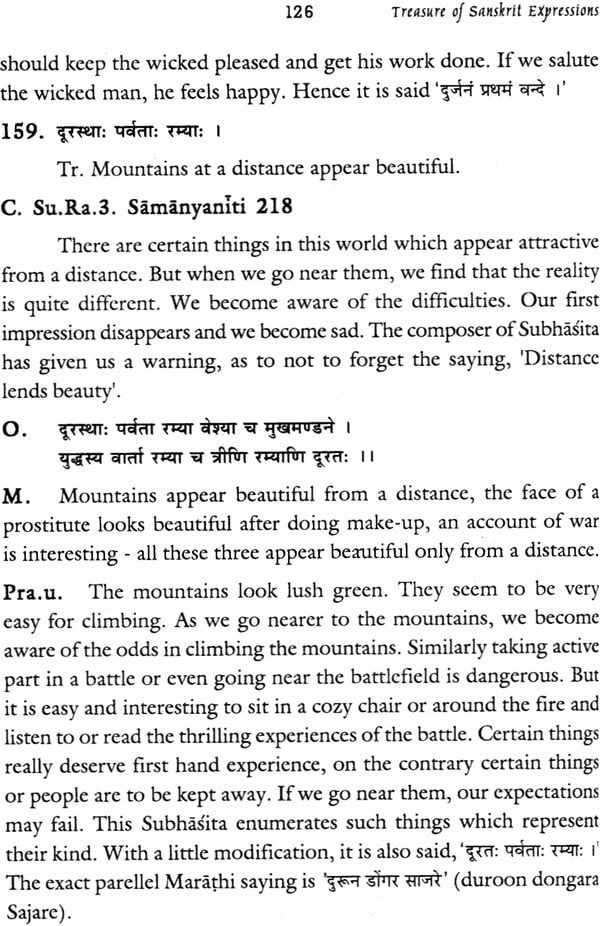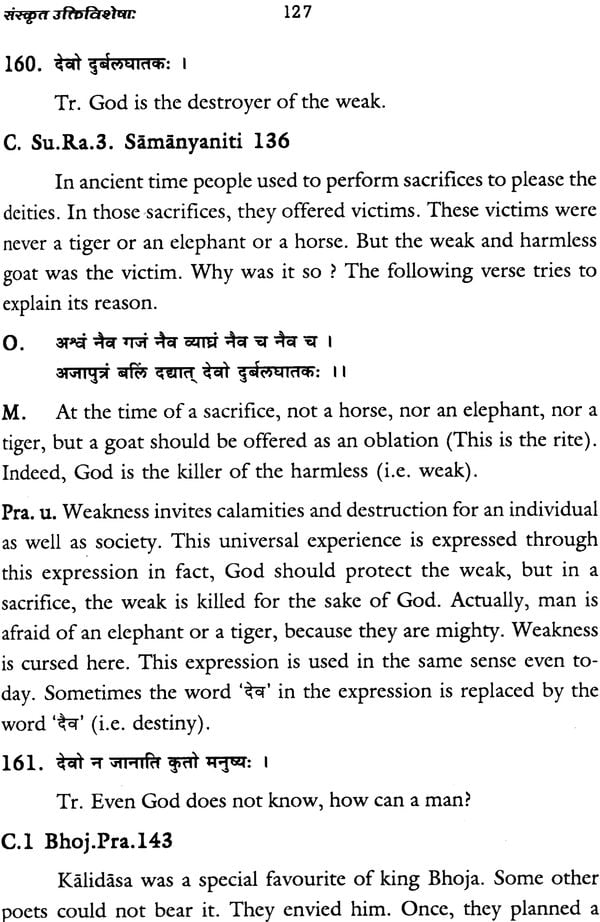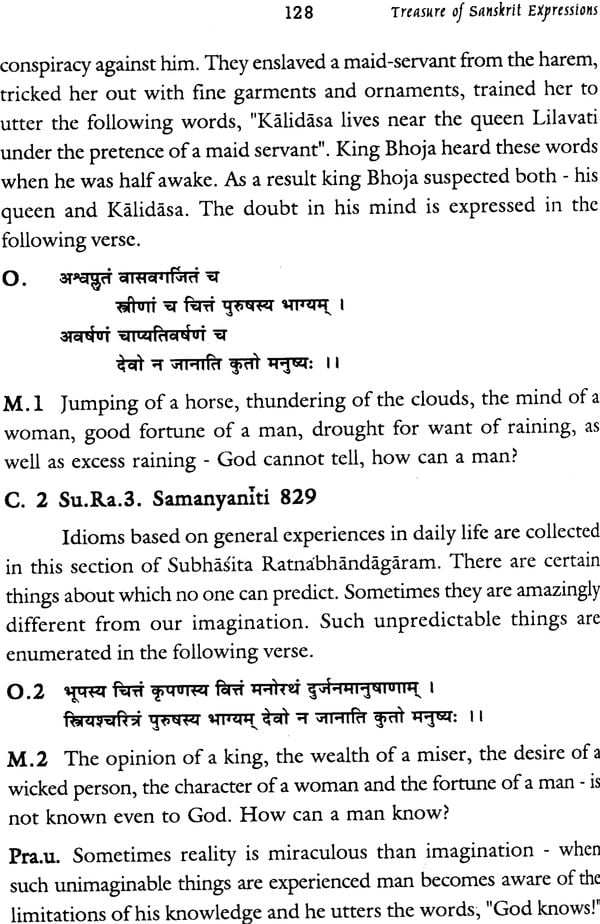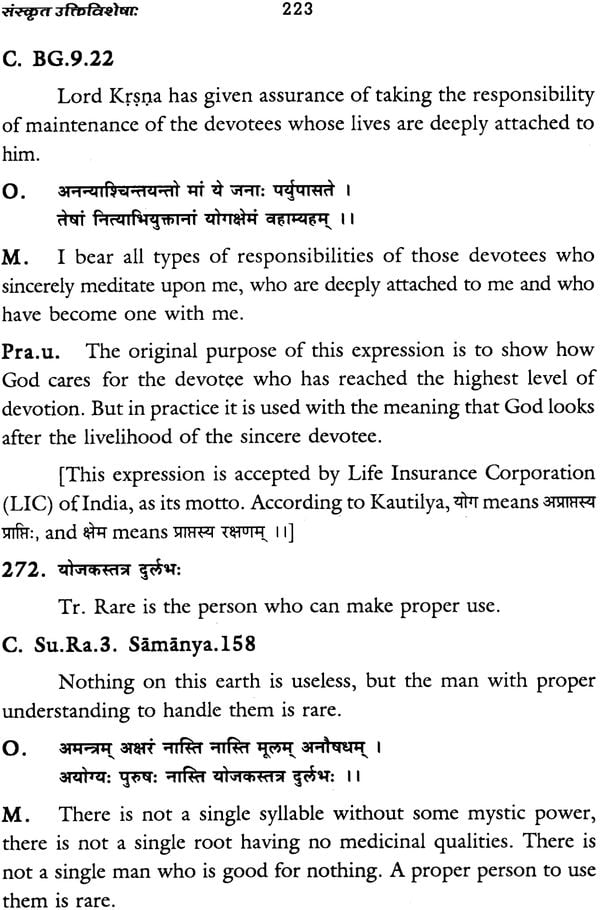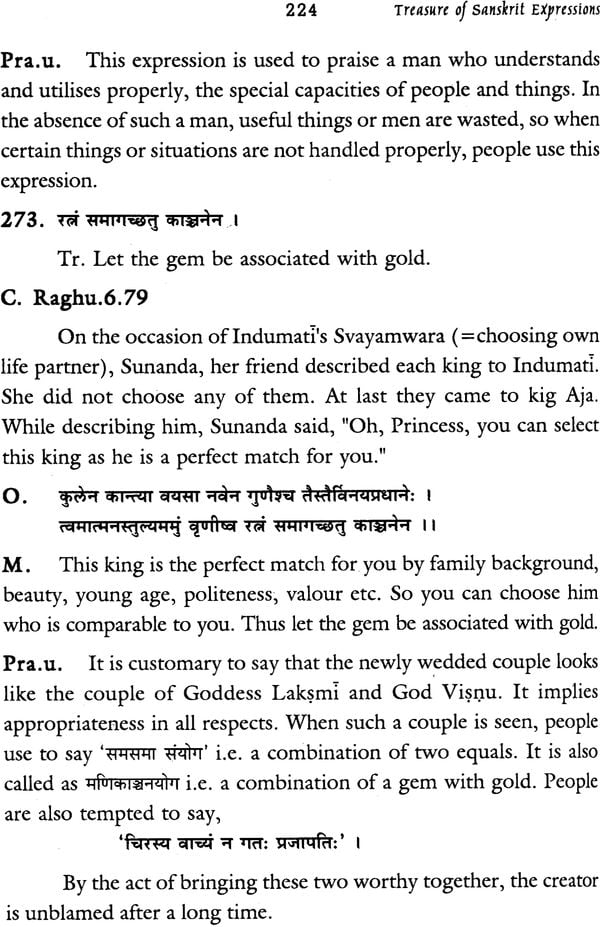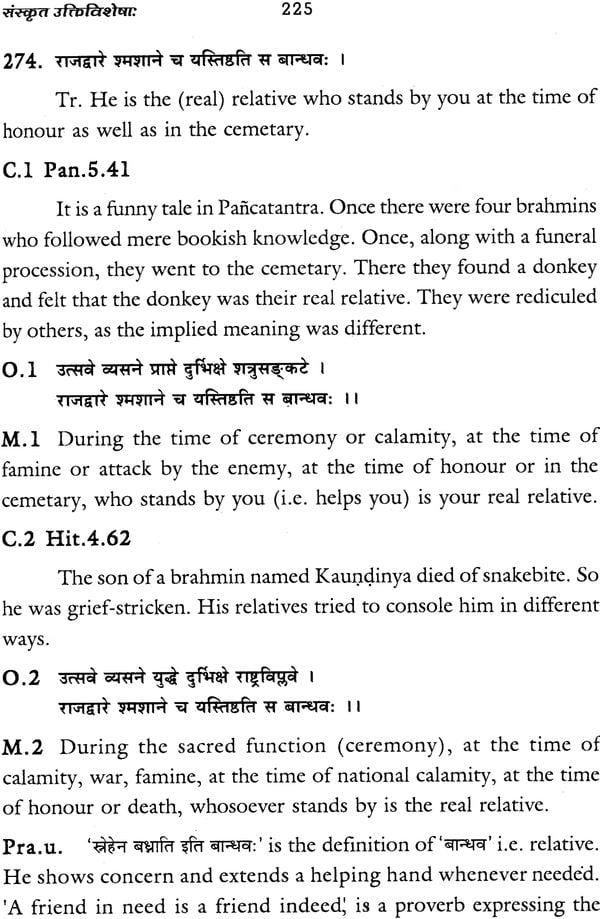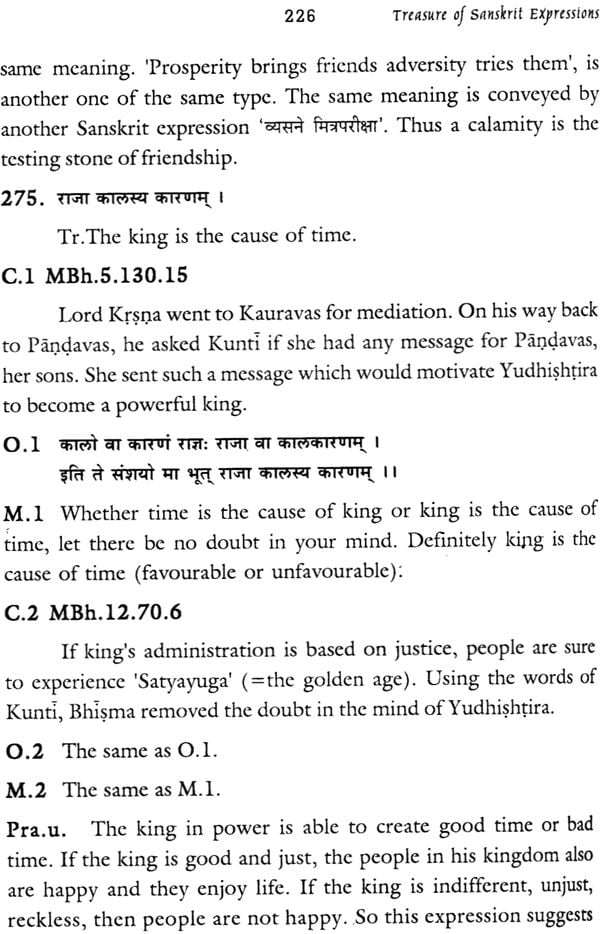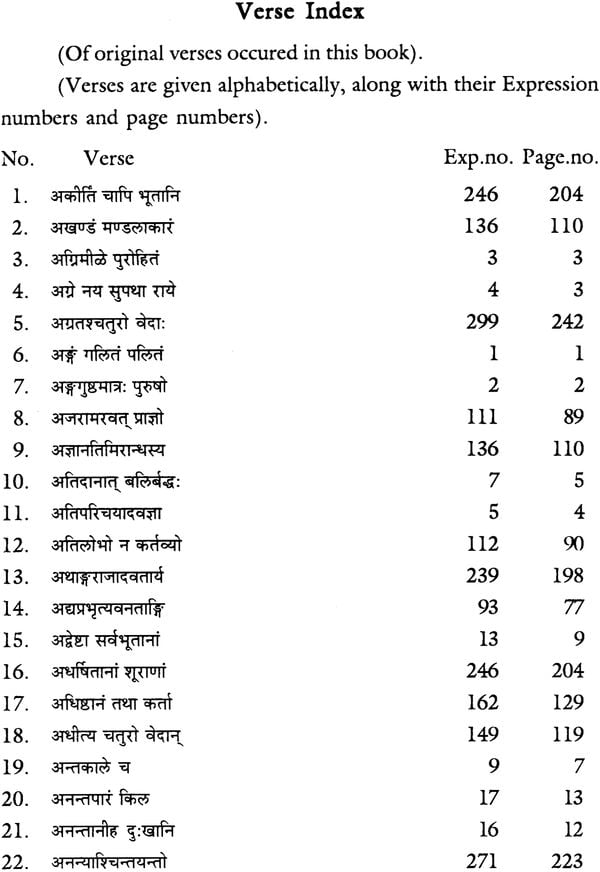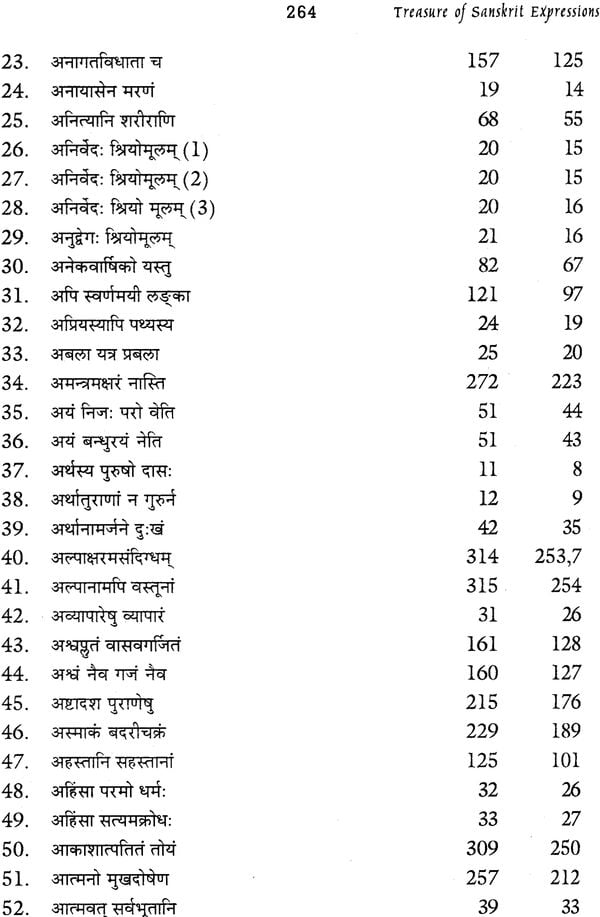
Treasure of Sanskrit Expressions (Sanskrit Quotations)
Book Specification
| Item Code: | NAC421 |
| Author: | Dr. Hema. K. Kshirsagar |
| Publisher: | Academy of Sanskrit Research, Melkote |
| Language: | Text with English Translation and Explanation |
| Edition: | 2009 |
| Pages: | 298 |
| Cover: | Paperback |
| Other Details | 9.8 Inch X 7.2 Inch |
| Weight | 570 gm |
Book Description

Dr. Smt. Hema K. Kshirsagar of Pune – the Author of this English version of select proverbial expressionism Sanskrit – titled “titled “Treasure of Sanskrit Expressions” (Samskruka Uktivishesha), has a long career as learned teacher in Sanskrit both at School and college level with special reference to her stint at Tilak College, Pune from where she retired as its Principal.
In fact this teaching experience has motivated to write this book in English to serve as a learning material (too) for the benefit of researchers, teachers, students and other interested persons who love & use Sanskrit expressions.
In fact I admire her patience and endurance in waiting for a long time before the Academy of Sanskrit Research, Melkote could consider including this book under its Publication Programme thought it is more a literary connected book. In fact our Visiting Professor Dr. Prabhakar Apte & our Registrar Sri B.S. Krishna Prasad are to be thanked for their persistent efforts in this endeavor.
Proverbs, idioms, picturesque phrases, parallels and the like characterize all languages rich in literary tradition. Phrases from this stock befitting the context enrich speech and writing and contributes to the effectiveness of the point the speaker or the writer wishes to make. Common talk and literary works are the sources of this stock; they create and borrow from each other the expressions of this nature and help their further spread. Such expressions are essentially of the nature of simile and its variations founded on comparison and contrast identified by different names in poetics. Briefness and effectiveness are their essential character.
As this stock grows in a language, the need to enlist it systematically is felt. The present collection of quotables from Sanskrit is the contribution to the need. Similar collections are in use as reference books. Such as ‘Bhuvanesa-laukika-nyaya-sahasri’. A collection of Sanskrit idioms with Sanskrit explanations, published about a century ago in Mumbai. The 1957-59 edition of Apte’s Sanskrit-English Dictionary also gives a glimps in its Appendix a short list of Sanskrit idioms with English explanations. Subhasita-ratna-bhandagara published by Nirnaya-sagara Press, Mumbai, is sea of poetic and amusing material from Sanskrit literature. It gives in an appendix about 700 short idiomatic expressions. Samayocita-padyamalika is a small collection of about 900 full verses containing popular lines. Its 14th edition was published in 1957 by Nirnaya-sagara Press, Mumbai. Collections mentioned so far are only illustrative. There may be many more, old and new, some of which are mentioned in the introduction of the present collection. The present collection of popular lines explains the Sanskrit stock in English in tune with the contemporary social conditions and needs.
What is the justification of making in modern times a collection of quotables from an old language like Sanskrit? The answer is obvious. Sanskrit is a leading classical language and is the foundation of most present-day Indian languages in grammatical structure and vocabulary, phonetically unchanged or changed, as a result of the trends of Prakrit languages which are a stage in the development of modern Indian languages. Sanskrit (also English, if the speaker or writer is familiar with it) quotations are, therefore, common in them depending on the educational status of the speaker or the writer. Such language levels corresponding to social levels is a natural phenomenon which reasonably exists in all languages. This fact has given rise to the classification of languages as standard speech and dialects.
The stock in the present collection of 320 expressions is arranged in the alphabetical order of the quotables (which are part of the flail verses), and hence leave no need for an index. Besides verses or lines from unknown sources, the major part of the collection is picked mainly from 58 (54+4) classical Sanskrit works and a few Vedic texts, with information about their publishers and publication dates. It gives original pieces in Sanskrit, their source books (if they are from known works), their original context (if known), explanation and comments (not only literal translation) in English and brief references to sources where known. The lists of abbreviations of the names of works and words of frequent use are prefixed to the collection. All these features give the collection the appearance of a research thesis! The only style not in tune with a thesis is the absence of diacritical marks in Sanskrit words spelt in Roman. Popular readership in view may be the reason for popular spelling, as such readership is not normally sufficiently acquainted with scholarly technicalities.
In the literary world it is customary for scholars/Student/ Researches who are engaged in the study of Sanskrit Literary to use Subhashitas as a Powerful tool to express their point of views effectively to their audience or readers.
Expressions like ….. are often quoted but while doing so it is quite possible that the user may not be knowing the origin, meaning or the context under which these Subhahitas are derived from. Thus with a view to unable the users with proper knowledge of the background of the used quotations/ annotations, here is an attempt to compile the details and bring it is as a guidebook.
In fact as stated in the preface to this edition by prof. Arunwadakar of pune several attempt s to cover annotations/ quotations in the appendixes of several publications, like “ Bhuvanesa- laukika nayaya sahasri”, 1957-59 are already made. But this book differs from them both in content and presentation.
In fact the “Uktivishessa” in Marathi , compiled by late Sri Amarendara Gadgil and the immense support receivedfrom the director & Registrar of the Academy of Sanskrit Research , Melkote (in Karanataka) inspired me to undertake this venture of compilation and critical edition.
I am sure this book will be well received and serve as a useful references to several libraries (public, institutional and even private collections ). At the same time if any shortcomings are notced the same may please be brought to my knowledge for corrections in the coming editions.
Acknowledgement
I am deeply indebted to the Director of the Academy of Sanskrit Research , Melkote in the Mandya Dist. Of Karnataka , paramapoojaya Dr. Prof. Bhashyan Swamiji and has able deputies- Sri B.S. Krishna Prasad the Registrar & Sri S. Kumara , the Asst. Registrar of the Academy who have kindly consented to include this book of may critical edition as part of the ASR Publication programme. Here my thanks are also due to vid . S. Narayana, the Researcher officer of the Academy , Scholar Sri R.K. Narayana Iyengar & the team of technical staff for their neat job of DTP & Printing work.
I ma also grateful to Dr. Prabhakar Apte, Dr. K. K. Kshirsagar , Prof. K.S. Arjunwadakar , Prof. Mrs. Leela Arjunwadakar Sri Vasant Kantikar & Dr. D.S Vajram for their immense contribution & encouragement in enabling me to complete this book.
My thanks are also due to those whom I might not have made a special mention in this as acknowledgement but have contribute their might in this endeavour.

